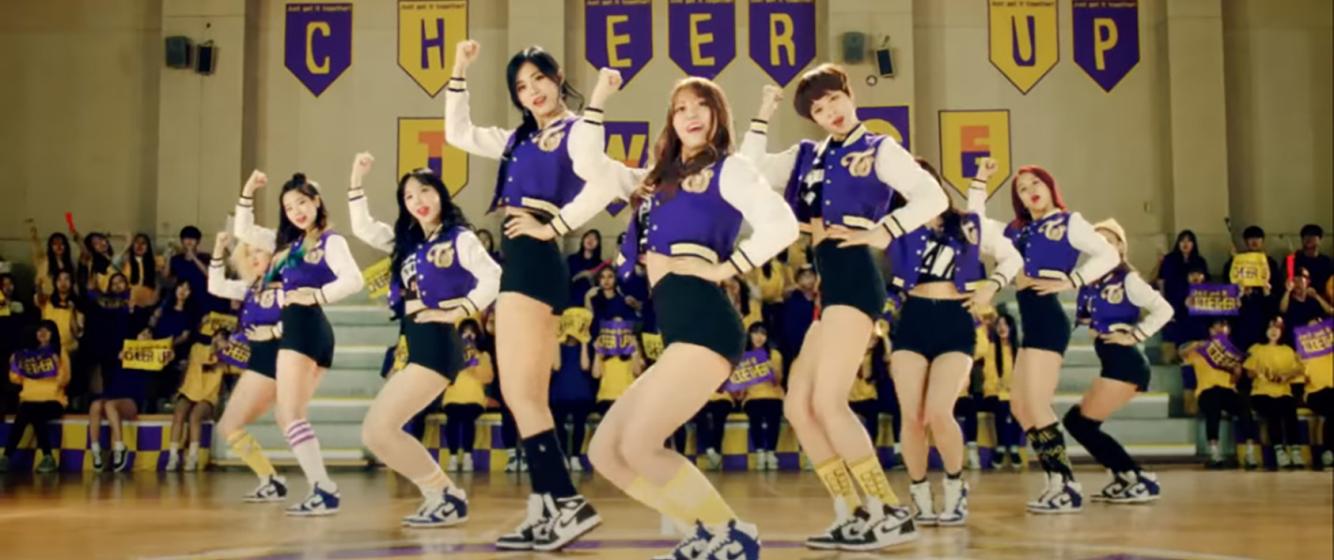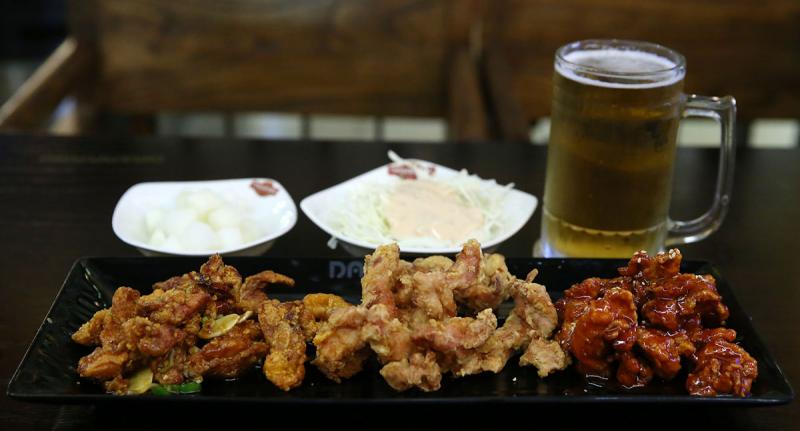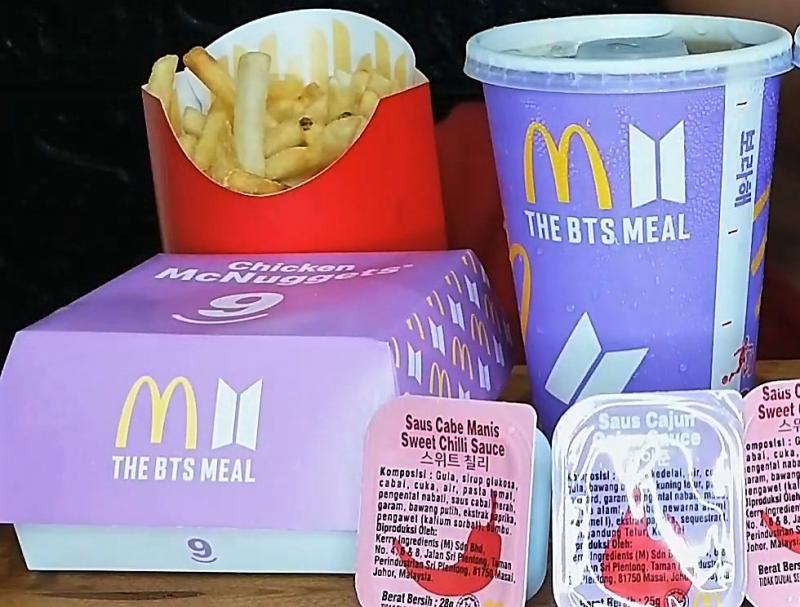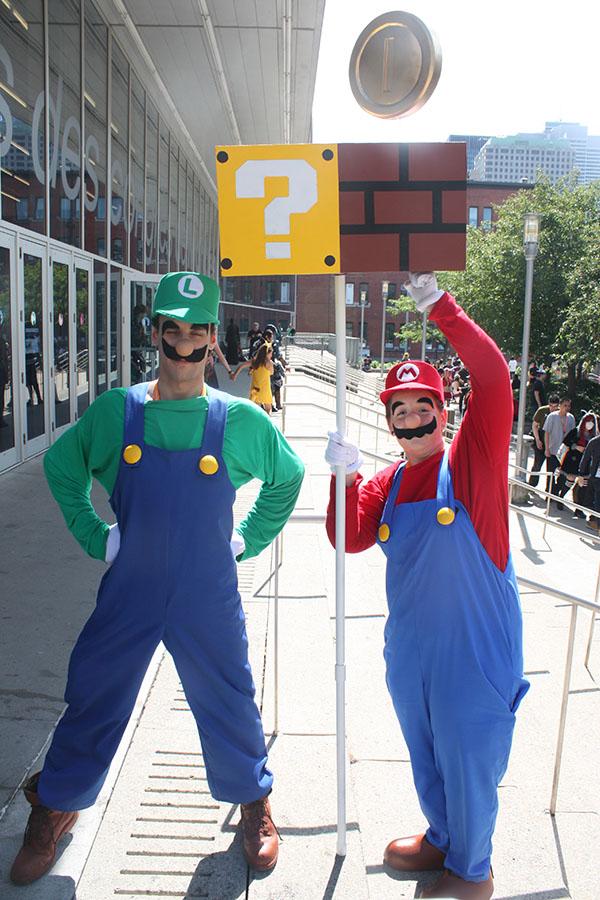A 2021 update to the Oxford dictionary contained a new word “chimaek,” meaning fried chicken and beer. This hybrid word “chi” from the English word chicken, and “maek” from maekju, Korean for beer became popular when it was featured in the hit K-drama “My Love From the Star” (Byeoreseo On Geudae, 2014), sparking worldwide interest in this Korean fried chicken dish. According to Joo Young-ha, a professor at the Academy of Korean Studies, non-Koreans identify chimaek (chicken and beer) as their favorite Korean food. There’s only one problem: most Koreans do not consider it as Korean. To get around this dilemma, Joo recommends focusing on the concept of “K-food” rather than arguing over whether or not this dish is a Korean dish.
This concept of K-food should be expanded to the concept of “K-culture,” encompassing K-pop, K-cinema, K-drama, K-fashion, and K-food. The word “K” invokes this hybrid culture of a hip and cool Korea with multicultural influences. Go to Korea, and you’ll see stores advertising K-cosmetics or K-food to entice international tourists. Also, there are K-weapons, like the K2 panther tanks Korea sold to Poland, in 2022.
K-culture and Korean culture overlap, but are distinct. Foods like kimchi are hansik (“Korean food” 韓食 한식). Contrast that with the foods of K-culture such as chimaek, Korean corn dogs (deep fried and rolled in sugar), Korean breakfast toast, Korean cafe drinks, or pastries from the global Korean chain “Paris Baguette.” Korean cosmetics command popularity worldwide, and their stores have English names like Olive Young, Face Shop, or Nature Republic. In fact, Korean goods are so popular that a Chinese company opened Mumuso, a chain of stores pretending to be Korean, and by using Korean hangul script and Korean style mascots to attract customers, are ironically more “Korean” than Korean cosmetic stores which do not feature hangul script in their overseas advertising.
The “K” in K-culture stands for Korea, but it also represents a larger cultural sphere for what we call the “Pop Pacific.” This sphere consists mostly of the US, Japan, and Korea (with significant influences from places such as Scandinavia), which combine to create a transnational Pacific culture. Korea is one of the major cultural centers of production in the “Pop Pacific” through the export of K-culture overseas. The “Pop Pacific'' reveals the links between Korea, Japan, and the United States and how K-pop is part of a larger global web of popular music.
Perhaps food could illustrate this relationship between Korean culture and K-culture. The BTS meal (Chicken McNuggets, French fries, Cajun sauce, and a Diet Coke) sold at McDonalds in 2021 is K-culture, and fans worldwide swarmed stores to get these meals. What is Korean about it? Just the labeling, right? In a similar manner, not much of K-culture is Korean. There is an acknowledgement of traditional Korean culture (whatever that means). K-pop videos contain symbolic references to Korean tradition, such as performers sometimes wearing hanbok (Korean clothing). Korean dramas set in the Joseon era such as “Jewel in the Palace” (2004) are popular abroad. Yet, most of the appeal of K-culture comes from globalized hybrid elements, like chimaek or Koreans doing hip hop dance moves.
K-pop also reveals much about K-culture. What happens when one turns off the sound while watching Korean music videos? Then one notices English signs, pseudo-American settings like an American style college campus, or people behaving in non-Korean behaviors. TWICE, a multinational girl group of performers from Korea, Japan, and Taiwan, invokes the image of American students in their video for “Cheer Up” (2016), performing in a gymnasium at an American-style high school pep rally with English signs in the background. With the sound off, this video invokes the image of Asian-American cheerleaders performing in a high school or college, like a mishmash hybrid of Korean and American settings. The group New Jeans, singing in a mix of Korean and English in the English-titled “Attention” (2022), portray themselves as young girls at an American-looking high school, dressed in fashions straight from the West Coast of the U.S. In BTS’ video “Spring Day” (2017), one of the members, V, is at a train station in Korea and then the whole group ends up at a motel with an English “no vacancy” sign, and at a laundromat with English instructions. In many videos, performers act like a strange hybrid of Asian American high school students in a setting with English language signs but dressed in Korean style school uniforms. This is also K-culture, an often-confusing blend of different cultures, and yet distinctly “Korean.”
Fans of Japanese anime and J-pop will also notice that what is most popular about Japan is a fusion of Japanese and (usually) American influences. For example, the Japanese video game company Nintendo uses Mario, an Italian American plumber from New York City as a mascot. Much of Japanese anime since its inception with Astro Boy in 1964 is what scholars like Iwabuchi Koichi call mukokuseki (無国籍), stateless and without nationality.[1] NBC in the 1960s could dub Tetsuwan Atomu into English and broadcast the anime as Astro Boy. Fans today are much savvier and know that a yellow electricity shooting Pikachu from Pokémon is Japanese. Even the gothic Lolita look of the 2000s, popularized by Japanese visual kei glam rock bands such as Malice Mizer, consist of a fusion of Victorian trends with punk influences, now forming a unique “Japanese” style.
Still, just like how people forget that Mario is American, fans of J-culture don’t really think about mukokuseki, and just consider it as “Japanese.” So, one could say that “stateless” Japanese popular culture has become “J-culture”. Douglas McCray, writing in 2002 about the rise of Japan as a popular culture powerhouse, observed that the secret of Japan’s popular culture appeal overseas came from this ability to combine cultures.[2] The same can be said about Korea. What fans most like about Korean popular culture is its “stateless” quality, or hybrid fusion of Korean, Japanese, and American influences from the “pop pacific.”
Japanese and Koreans like to tell me that societies are ethnically homogenous even though contradictory evidence is omnipresent around them, although they just cannot see it. Step into a convenience store today in a major city like Tokyo and you will most likely be greeted in Japanese by a store clerk from Nepal or China. At a restaurant in Korea, one of my servers was from Uzbekistan and we communicated in Korean since he didn’t know English and I didn’t know Uzbek. In both nations, in the countryside and smaller cities of Japan and Korea, you will find immigrant workers in the farms or seafood processing factories or Filipina and Vietnamese brides. Also, in Japan, there are substantial zainichi (Korean residents of Japan) communities, the result of prewar colonial era migration to Japan.
K-culture and J-culture represent the diversity of cultures and stories of historical interactions in both nations. K-culture is the newer, hip, and cool form of Korea. J-culture is the westernized and globally appealing popular culture of Japan. Writing this article has made me hungry. Time to eat some Korean honey-butter potato chips and Japanese Kit-Kat bars.
[1] Iwabuchi Koichi, Recentering Globalization (Durham, NC, Duke University Press, 2002), 39.
[2] The linked article is dated 2009, but McCray’s work first came out in 2002.
Discussion Questions
- How does “K-culture” differ from traditional “Korean culture” (hansik, hanbok, etc.)?
- The article argues much of K-culture is “globalized hybrid” rather than purely Korean. Do you think this makes K-culture less authentic, or does it actually strengthen its global appeal?
- Many K-pop videos show performers in American-style settings with English signs. What does this say about how K-culture is marketed to international audiences?
- The article compares J-culture’s appeal to its mukokuseki (“stateless”) quality. How does this idea challenge the way we usually connect culture to nationality?
- The BTS Meal at McDonald’s (chicken nuggets, fries, Diet Coke) was hugely popular worldwide. What does this example show us about how branding and labeling can create “K-culture” even without traditional Korean elements?
- If K-culture and J-culture are built on blending and borrowing from other cultures, does it still make sense to label them with a national identity at all? Why or why not?




Add new comment